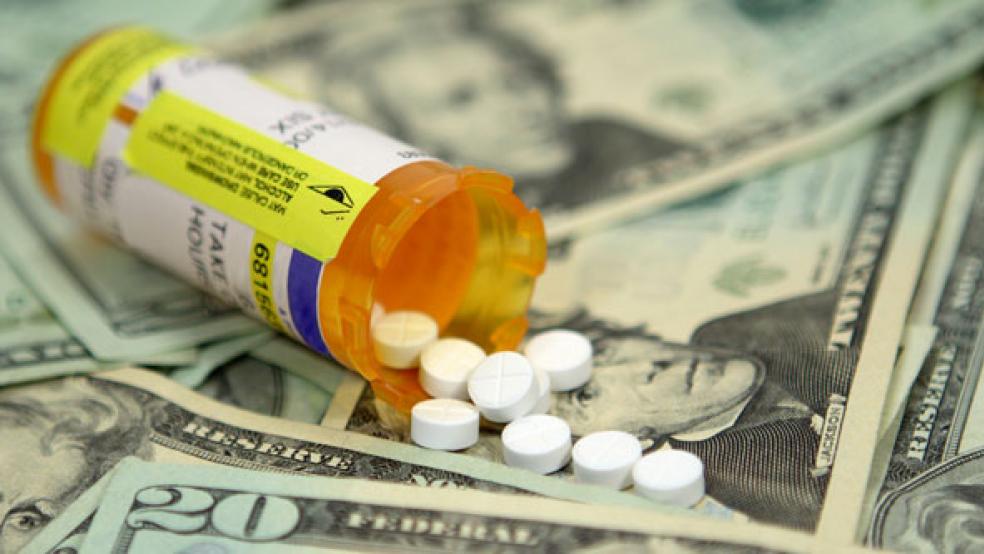There’s a little bit of good news on the drug pricing front with Gilead Sciences’ announcement Tuesday that the Food and Drug Administration has approved a highly effective but considerably cheaper version of Sovaldi to treat the often lethal hepatitis C virus.
Gilead has long been a poster child for excessive drug pricing practices involving critically needed, state-of-the-art drugs like Sovaldi, which costs $1,000 per pill before discounts, or as much as $84,000 for a full course of treatment.
Related: The Killer Disease on the Rise that Could Explode Health Costs
Sovaldi and its sister drug Harvoni boast liver disease cure rates of 90 percent or better. However, they are so expensive that they have swamped the budgets of Medicaid, Medicare, the Department of Veterans Affairs and federal and state prison systems that provide medical treatment. Some of these agencies already have begun rationing the drugs to make them available to only the sickest patients.
Gilead’s latest iteration of a hepatitis C drug – called Epclusa – is also very expensive. But at less than $1,000 per pill or $74,760 for a complete treatment, the new arrival on the drug market is a relative bargain.
The new treatment is getting a lot of attention within the drug and medical industries because for the first time it provides treatment for all six forms of the highly dangerous liver disease. The Centers for Disease Control reported last month that there were 19,659 deaths in 2014 related to hepatitis C, the highest number on record.
In response to negative publicity over pricing, Gilead Sciences has sought to increase patient accessibility to its hepatitis wonder drugs by offering health insurers, government agencies and consumers deep discounts. Gilead Executive Vice President Paul Carter explained in late April that his company missed analysts’ first-quarter estimates of revenue and earnings largely because of the discounts now being offered that lowered the company’s per-patient revenues from the popular drugs.
Related: As Valeant’s CEO Apologizes, the Rest of the Industry Keeps Hiking Drug Prices
But while Gilead and other Big PhRMA drug companies boast of their generosity in sharply bringing down astronomical list prices, Bloomberg just published a revealing study showing that even factoring in deep discounts, many major manufacturers have been raising prices far ahead of the rate of inflation.
As the study notes, the pharmaceutical industry has long argued that drug list prices – like sticker prices on cars – are a bad gauge of what people really pay because major customers, including health care insurers and pharmacy benefit managers, frequently make deals to bring down the price.
However, the new Bloomberg analysis of 39 prescription drugs with worldwide sales of more than $1 billion annually found that 30 of them increased prices by “more than double the rate of inflation” between 2009 and 2015, “even after estimated discounts were factored in.” Just six of the 39 drugs surveyed had price increases that were in line with or slightly below inflation.
Bloomberg said its analysis was based on discount and pricing data and U.S. gross sales for each drug as estimated by SSR Health, an investment research firm. The discounts can vary considerably and depend on the type of disease being treated and the extent of competition in the drug market.
Related: Ignoring Warnings, Drug Companies Hike Prices By 10 Percent
For instance, Humalog, Eli Lilly’s popular insulin drug, is heavily discounted. After those discounts were factored in, the average price paid by insurers rose slightly less than the 9.5 percent rate of inflation for the period studied. In part this was due to the impact of competing drugs.
By contrast, Pfizer boosted its discount on its Lyrica drug for fibromyalgia, a muscle pain problem, to 33 percent last year. However, list prices have skyrocketed by 145 percent over the past six years. “The drug has relatively few close competitors, making it harder for insurers to remove from coverage lists,” Bloomberg reported.





